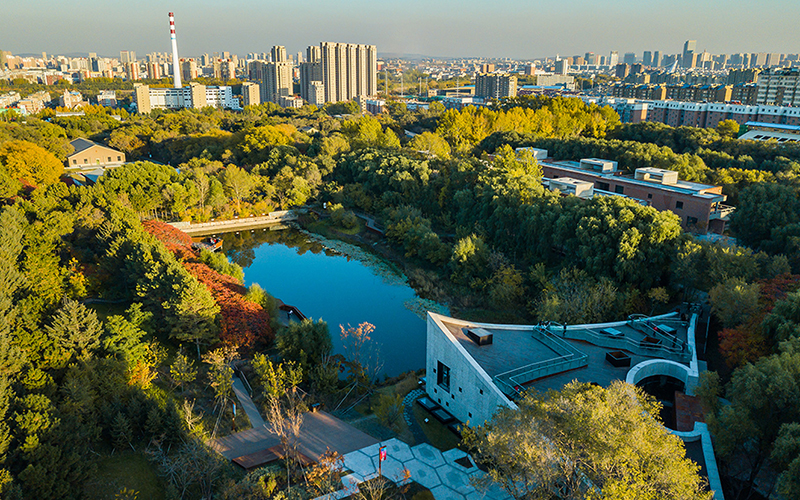ASLA urges governments to focus on cities and nature to meet climate goals.
 ASLA 2019 Professional General Design Honor Awward. Changchun Culture of Water Ecology Park, Changchun, China. SHUISHI / Pan Shuang
ASLA 2019 Professional General Design Honor Awward. Changchun Culture of Water Ecology Park, Changchun, China. SHUISHI / Pan ShuangThe third assessment report of the Intergovernmental Panel on Climate Change (IPCC) -- Climate Change 2022: Mitigation of Climate Change -- which was created by nearly 300 scientists in 65 countries over the past seven years, finds that cities are a significant contributor to global emissions.
Recent estimates place cities’ share of global emissions at more than 70 percent. With expected population growth, existing and future cities can either be the primary source of future warming or a key solution.
According to the IPCC, if little is done, future cities could contribute 40 billion metric tons of emissions each year by 2050. But by taking important steps starting this decade, that number could reach as low as 3 billion tons.
“Landscape architects are systems designers. We are already designing the next generation of park, transportation, and water infrastructure needed to make this transformation happen. But we need more policymakers to prioritize these changes,” said ASLA President Jeannie Martin, FASLA.
“Landscape architects plan and design walkable environments that are central to reducing urban energy demand and emissions. This work has involved partnering with planning and design professions to pair public transit with transit-oriented development, and integrate Complete Streets, which offer safe, accessible pedestrian and bicycle access, and trails and greenways,” said Torey Carter-Conneen, ASLA CEO.
Designing with nature is critical to achieving broader urban climate goals. Landscape architects integrate green infrastructure in the form of parks, green roofs, green streets, rain gardens, and bioswales that not only sequester carbon from the built environment but also manage stormwater, reduce urban heat islands, increase biodiversity, and improve health and well-being.
The IPCC’s latest report also calls for preserving existing ecosystems that store carbon, such as forest, prairies, peatlands, mangroves, and wetlands. But notes that these ecosystems are also increasingly threatened by rising temperatures, wildfires and other climate impacts, and human development.